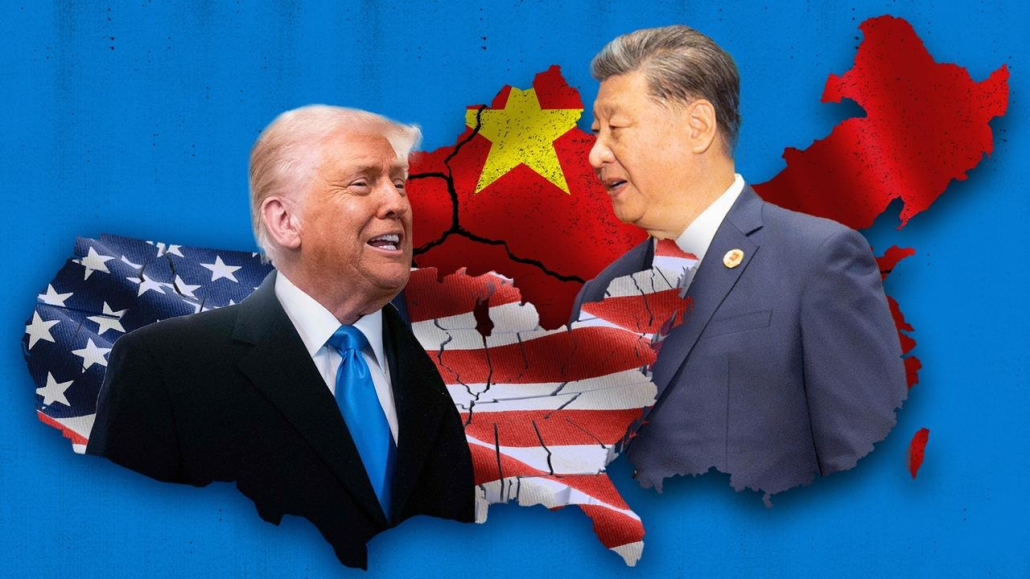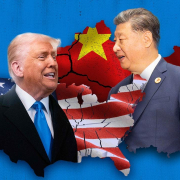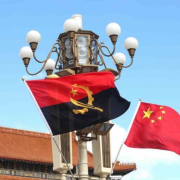USA: To Solve a Problem, First Create One!

When Two Giant Elephants Fight, It’s the Grass That Suffers!
JOÃO SHANG
Associate Researcher at CEDESA (China‑Africa area)
Visiting Professor at Beijing University of International Business and Economics
On October 30, 2025, Chinese President Xi Jinping and U.S. President Donald Trump met in Busan, South Korea, in what was their first face‑to‑face encounter since 2019. Despite its brevity, the meeting carried significant symbolic and strategic weight, signaling that China and the United States can, under certain circumstances, achieve mutual success and shared prosperity.
In recent years, Sino‑American relations have been marked by intense tensions — tariff disputes, technological conflicts, disagreements over Taiwan, Indo‑Pacific security issues, and vulnerabilities in global supply chains. The reunion between the two leaders was therefore interpreted as a gesture of détente and a high‑level political test to reassess the balance between the two largest powers in the international system.
Trade and Tariffs: A Temporary Truce
The main outcome of the meeting was the provisional reduction of trade tariffs. Trump announced that the United States would lower the average tariff on Chinese products from 57% to 47%, and that punitive tariffs on chemical precursors — linked to the fentanyl crisis — would be reduced from 20% to 10%.
In return, China committed to resuming large‑scale purchases of U.S. soybeans, corn, and other agricultural goods. Additionally, Beijing decided to suspend, for one year, restrictions on the export of rare earth elements — a resource essential to the global technology industry. This decision was interpreted as a gesture of stability and a demonstration of China’s strategic weight in that sector.
Trump described the meeting as “surprising and incredible,” even saying he would “rate it a 12 out of 10.” Xi Jinping, for his part, considered the frictions between China and the U.S. to be “normal phenomena,” emphasizing the importance of avoiding “vicious cycles of mutual retaliation.” Both leaders stressed the terms “communication,” “stability,” and “cooperation,” in contrast with the aggressive rhetoric of previous years. However, sensitive topics such as technology exports, social media, Taiwan, and regional security were mentioned only briefly, with no concrete progress.
Trade Truce, Not a Structural Solution
The agreement essentially represents a return to a previous point of stability rather than a qualitative breakthrough. Structural divergences persist, and Sino‑American relations may deteriorate before they improve. Trump’s strategy appears to consist of creating a problem first, then negotiating its resolution.
Chinese Strategic Initiative vs. U.S. Political Calculation
China demonstrated greater strategic initiative. Holding roughly 70% of the world’s rare‑earth reserves and dominating the technology for their processing, Beijing possesses strong negotiating leverage. Trump, on the other hand, seeks immediate political gains — tariff reductions and increased agricultural exports aim to consolidate support in rural states.
China, by contrast, adopts a long‑term perspective: stabilizing the external environment, strengthening its international image, and preparing the ground for internal adjustments. For Trump, tariffs serve as a tool of pressure — his logic is to provoke deadlock and then negotiate its solution.
Symbolic Value Greater Than Real Progress
Global markets reacted cautiously, interpreting the meeting as a symbolic gesture rather than a structural turning point. Chinese analysts believe a new phase of “competition on equal footing” is beginning — a G2 rivalry in which both sides acknowledge each other’s importance without abandoning strategic competition.
The tariff truce and the resumption of agricultural purchases generate immediate benefits: for the U.S., they relieve pressure on the farming sector and bring political gains; for China, they mitigate export impacts and help stabilize employment and consumption. Yet this is only a palliative measure. Industrial and technological competition continues, and structural imbalances remain. As economists put it, “this truce offers a breath, but not a cure.”
The issue of microchips and the export of sensitive technologies was mentioned, but no concrete agreement was reached. Washington maintains strict control over technology exports, while Beijing invests in self‑sufficiency. The temporary suspension of rare‑earth export restrictions is a strategic pause — if the geopolitical context shifts, China could reinstate such measures, directly affecting U.S. industry and its allies.
Geopolitics and Global Narratives
The meeting symbolizes both an attempt to ease tensions and a new stage of strategic competition. For third countries — such as South Korea, Japan, and Southeast Asian nations — the message is clear: rivalry remains, though momentarily under control.
Xi Jinping advocated for an “inclusive globalization” oriented toward the Global South. According to the Spanish newspaper El País, this narrative seeks to position China as an alternative to the U.S.‑led liberal order, reinforcing the trend toward multipolarity. Trump views diplomacy as a transaction — every deal must yield tangible benefits. Xi, on the other hand, acts with a state logic, portraying China as a rational, responsible, and confident power.
Structural Contradictions Persist
Despite the amicable tone, the fundamental contradictions in Sino‑American relations remain:
– Technology: The U.S. fears China’s scientific rise; China views autonomous innovation as a matter of national security.
– Supply chains: Washington seeks to “de‑risk,” while Beijing accelerates import substitution.
– Global governance: The U.S. defends the traditional liberal order; China proposes a more plural and inclusive model.
– Regional issues: Taiwan, the South China Sea, and Indo‑Pacific security continue to be flashpoints.
Future Outlook
Short Term:
Over the next 12 months, both sides are expected to prioritize stability and dialogue. China will use the truce to strengthen its technological and industrial base, while the U.S. will seek to avoid external shocks ahead of the midterm elections.
Medium Term:
If the temporary measures become institutionalized — through agreements on agricultural trade, strategic resource exports, and technology standards — a relationship of controlled competition may emerge. However, factors such as political polarization in the U.S. or economic slowdown in China could undermine this process.
Long Term:
Experts foresee three possible scenarios:
1. Limited cooperation: ongoing competition with stable areas of coordination;
2. Renewed confrontation: reactivation of tensions due to regional crisis or domestic politics;
3. Structural transformation: redefinition of the global order with a new division of power and complementary roles.
The most likely scenario is the first — competitive coexistence, marked by strategic rivalry but managed through permanent diplomatic channels.
Impacts on Third Parties and the Global Economy
United States:
Agricultural states and export sectors will benefit in the short term, though industrial and technological challenges persist.
China:
The meeting reinforces China’s image as a stable and dialogue‑oriented power, providing relief to its economy and restoring market confidence.
Global Economy:
The signal of détente helps stabilize supply chains, particularly in high‑tech and energy sectors. Still, middle‑tier countries remain vulnerable to fluctuations in Sino‑American rivalry.
Conclusion
The meeting between Xi Jinping and Donald Trump in Busan marks a significant milestone, but not a definitive turning point. It represents a gesture of strategic moderation — each side sought specific gains and avoided further escalation of tensions. Structural divergences — technological, economic, and ideological — continue to shape the backdrop of the relationship. Even so, the reestablishment of high‑level dialogue is, in itself, a meaningful institutional advancement.
In a world marked by growing uncertainty, the future of Sino‑American relations will depend on both countries’ ability to turn an inevitable rivalry into strategically managed cooperation. The so‑called “Busan Truce” may not resolve deep‑rooted contradictions, but it opens a new chapter — more cautious, more pragmatic, and perhaps more mature.
The stabilization of economic development in China and the United States has the potential to significantly boost the global economy. Conversely, a renewed escalation of tensions between these two powers would have deeply negative effects on the international system. As the African proverb says: “When two elephants fight, it’s the grass that suffers.”
An unstable economic partnership between China and the United States poses a systemic risk to the entire world. Yet China’s progress and revitalization are not incompatible with President Trump’s stated goal of “making America great again.” On the contrary, there is room for mutual success and shared prosperity.
China and the United States must be partners, not adversaries — a lesson taught by history and demanded by contemporary reality. China expresses full willingness to continue working with President Trump in building a solid foundation for bilateral relations, fostering an environment conducive to the sustainable development of both nations.










